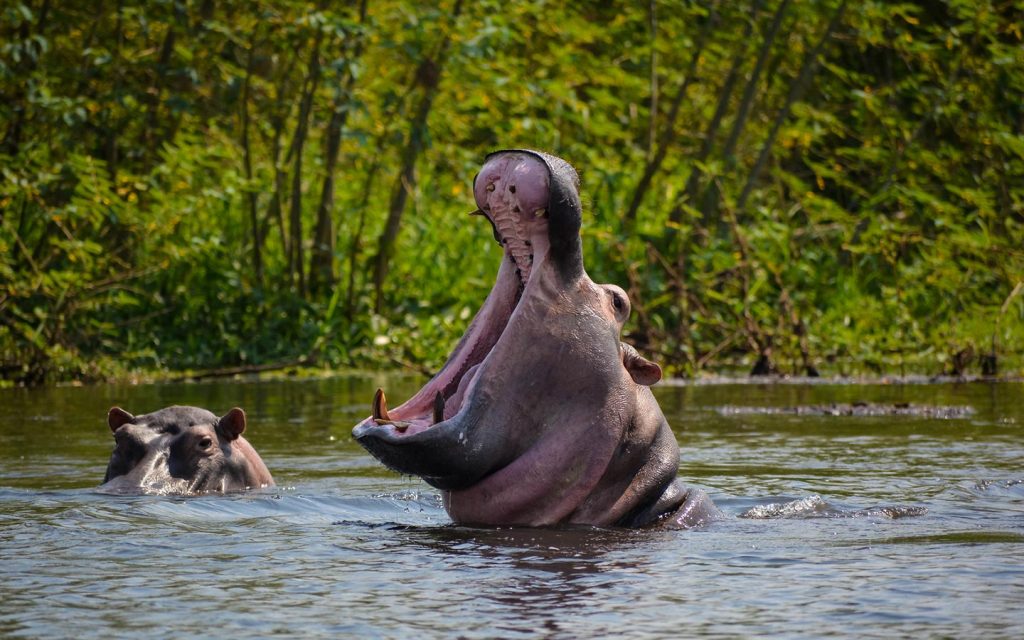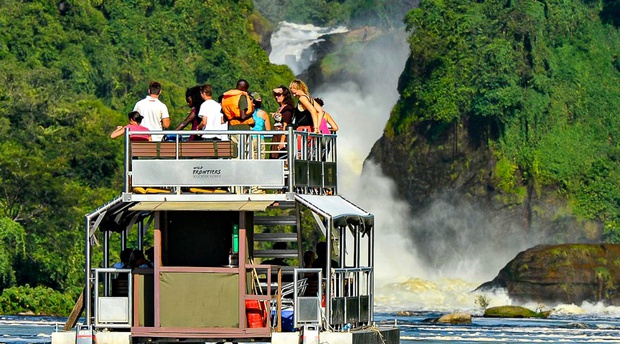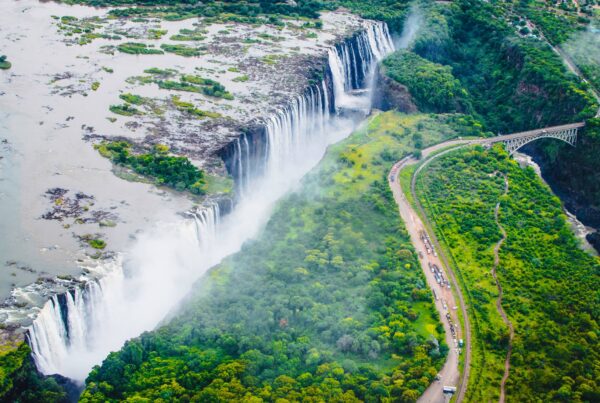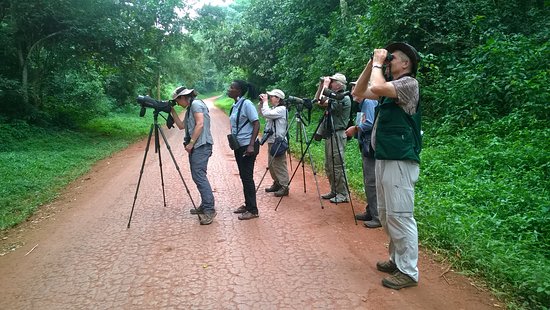Ultimate Travel Guide to Murchison Falls National Park
The Untamed Jewel of the Nile
At the heart of Uganda’s wilderness lies Murchison Falls National Park, a destination of striking beauty and immense power where the Nile River thunders through a narrow gorge before cascading into a roaring pool below. This spectacle of water, sound, and unyielding force defines the park, making it one of Africa’s most dramatic natural landmarks. For centuries, explorers, naturalists, and travelers have been drawn to this remarkable place, where the allure of the untamed wild meets the majesty of Africa’s longest river.
Murchison Falls is not merely a park; it is an emblem of Uganda’s ecological wealth and a gateway to unforgettable encounters with nature. The park’s blend of vast savannahs, riverine forests, and sweeping woodlands supports a diversity of wildlife that mirrors the grandeur of the landscapes. From herds of elephants grazing in the open plains to crocodiles lurking in the shallows of the Nile, and from giraffes stretching towards the acacia canopies to lions prowling silently at dusk, the park unfolds as a living masterpiece of the natural world.
For travelers seeking the ultimate safari adventure, a visit to Murchison Falls offers a rare combination of raw wilderness, breathtaking scenery, and cultural depth. This guide unveils the park’s landscapes, wildlife, history, and travel essentials, creating a resource for those who wish to discover Uganda’s largest and most iconic protected area.
The History and Significance of Murchison Falls
The story of Murchison Falls National Park is rooted in both natural and cultural heritage. Established in 1952, it is Uganda’s oldest and largest conservation area, spanning over 3,800 square kilometers. Its significance, however, predates its formal designation. The Nile, which slices through the park, has long been revered as a lifeline for both wildlife and people. Early explorers, including Sir Samuel Baker, were captivated by the falls in the nineteenth century, describing them as a natural wonder unlike any other. It was Baker who named the falls in honor of Roderick Murchison, a prominent geologist of the era.
During the twentieth century, the park became a sanctuary not only for wildlife but also for scientific exploration and tourism. Although periods of political unrest led to poaching and population decline among species such as elephants and rhinos, conservation efforts have since revitalized the ecosystem. Today, Murchison Falls stands as a testament to resilience, conservation, and the enduring magnificence of Uganda’s landscapes.
Landscapes and Natural Beauty
The landscapes of Murchison Falls are diverse and captivating. The northern sector of the park is dominated by rolling savannahs and open grasslands, dotted with Borassus palms and acacia trees, creating a quintessential African scene. Herds of antelope graze freely, while giraffes and buffalo traverse the plains under the sweeping skies. The southern sector contrasts sharply, with woodlands, riverine forests, and thick vegetation, providing shelter to chimpanzees and other primates.
The Nile River, which divides the park, serves as the lifeblood of the ecosystem. It flows from Lake Victoria, traverses Lake Kyoga, and makes its way into Lake Albert after passing through the narrow cleft that forms Murchison Falls. This river is more than a geographic feature; it is the stage upon which the park’s drama unfolds. The spray from the falls, the thunderous sound of crashing water, and the rainbow arcs that appear in the mist create scenes that remain imprinted in memory long after departure.
The Power of the Falls
At the heart of the park lies the mighty spectacle of Murchison Falls, where the Victoria Nile narrows from a width of nearly fifty meters into a gorge barely seven meters wide before plunging forty-three meters below. The sight is breathtaking, as millions of liters of water crash through the rock, creating a roar that reverberates across the cliffs. This immense force has earned Murchison Falls the reputation of being the most powerful waterfall in the world.
Visitors can witness the falls from several vantage points. Boat cruises along the Nile provide dramatic views from below, where hippos, crocodiles, and elephants are frequently observed along the banks. Hiking trails lead to the top of the falls, where the water can be felt vibrating beneath one’s feet, and panoramic views of the river and surrounding savannah stretch into the distance. The combination of sight, sound, and sensation makes Murchison Falls an unforgettable centerpiece of any Ugandan safari.
Wildlife Diversity in Murchison Falls
The park is home to an impressive array of wildlife, making it one of Uganda’s premier safari destinations. Elephants, lions, leopards, giraffes, buffalo, and hyenas roam the savannah, while hippos and crocodiles dominate the Nile waters. Over seventy mammal species inhabit the park, ensuring that every game drive or boat safari reveals something extraordinary.
Primates add to the richness, with chimpanzees thriving in the Budongo Forest Reserve on the southern edge of the park. This forest, one of the largest mahogany reserves in East Africa, also shelters black-and-white colobus monkeys, red-tailed monkeys, and olive baboons. Birdlife is equally abundant, with over 450 species recorded. From the rare shoebill stork to colorful kingfishers, fish eagles, and herons, the park serves as a paradise for birdwatchers.
The wildlife experience in Murchison Falls is shaped not only by diversity but also by scale. The herds appear vast, the predators more elusive yet present, and the river ecosystem teems with life. This grandeur distinguishes the park from others, offering encounters that feel both dramatic and authentic.
Activities in the Park
A visit to Murchison Falls offers more than traditional game drives. Each activity is designed to showcase the park’s varied ecosystems and reveal the depth of its beauty.
The boat safari along the Nile remains one of the most iconic experiences. Departing from Paraa, these cruises glide upstream towards the base of the falls, passing pods of hippos, basking crocodiles, and a wealth of bird species. The stillness of the water contrasts with the anticipation of the approaching falls, culminating in a view that is both serene and powerful.
Game drives in the northern savannahs provide another dimension of exploration. Early mornings and late afternoons are particularly rewarding, as predators are more active and herbivores gather in large numbers. The Kasenyi plains and Buligi tracks are especially productive for sightings of lions, elephants, and Uganda kob.
For those seeking physical engagement, the hike to the top of the falls delivers both adventure and reward. The sound grows louder with each step, the mist rises higher, and the culmination offers an unparalleled vantage point over one of Africa’s greatest natural wonders.
In Budongo Forest, chimpanzee trekking introduces visitors to the primate world. Guided walks through the lush canopy bring travelers face to face with these intelligent and social creatures, offering insights into their behavior and conservation challenges.
Accessibility and Travel Logistics
Murchison Falls National Park lies approximately 300 kilometers northwest of Uganda’s capital, Kampala. Travel by road takes between five and seven hours, depending on the route and conditions. The journey passes through scenic countryside, small towns, and rural landscapes, providing a glimpse into Uganda’s cultural life.
For those preferring air travel, domestic flights operate to Pakuba, Chobe, and Bugungu airstrips, significantly reducing travel time. These flights are particularly convenient for travelers with limited schedules or those seeking comfort.
Once inside the park, the Paraa ferry connects the southern and northern banks of the Nile, facilitating access to game drive areas and lodges. Roads within the park are primarily dirt tracks, navigable with four-wheel drive vehicles, particularly during the rainy season. Accessibility may vary depending on seasonal conditions, and planning with local expertise ensures a smoother experience.
Accommodation Options
Accommodation within Murchison Falls caters to a wide spectrum of preferences. Luxury lodges perched along the Nile offer panoramic views and high levels of comfort, with spacious rooms, fine dining, and guided excursions integrated into their services. Mid-range lodges and tented camps provide balance between affordability and comfort, while budget campsites offer simplicity and closeness to nature.
Each option ensures that visitors remain immersed in the wilderness. Nights in the park are characterized by the calls of distant lions, the grunts of hippos, and the rustling of nocturnal animals, creating an atmosphere that reinforces the sense of being far removed from the modern world.
Seasons and Best Time to Visit
The climate of Murchison Falls is defined by wet and dry seasons. The dry months, typically from December to February and June to September, are considered the best times to visit. During these periods, roads are more accessible, vegetation is thinner, and wildlife congregates around water sources, enhancing visibility.
The wet seasons, from March to May and October to November, bring lush greenery and increased bird activity. Migratory species add to the avian diversity, and landscapes appear vibrant and refreshed. However, heavy rains can make some roads challenging to navigate, and boat cruises may be affected by rising water levels. Travelers must weigh the benefits of lush scenery and birdwatching against the potential difficulties of access during these times.
Cultural Encounters Around the Park
Beyond the wildlife, Murchison Falls offers cultural richness through interactions with communities living near the park. Visits to villages reveal traditional dances, crafts, and farming practices, offering insights into how people coexist with the wilderness. The Banyoro and Alur communities, among others, share their heritage through music, storytelling, and art. These encounters deepen the safari experience, providing not only entertainment but also education and appreciation of Uganda’s cultural mosaic.
Conservation and Sustainability
Murchison Falls has faced challenges of poaching, habitat loss, and human-wildlife conflict over the decades. Conservation initiatives, led by the Uganda Wildlife Authority and supported by international organizations, have worked to restore populations of elephants, giraffes, and other species. Anti-poaching patrols, community involvement, and tourism revenue have played pivotal roles in sustaining the park’s ecosystem.
Visitors contribute to conservation simply by choosing responsible tourism. Fees support park management, while engagement in community projects fosters coexistence between humans and wildlife. The future of Murchison Falls depends on the delicate balance between preservation and access, a responsibility shared by all who step into its landscapes.
Comparing Murchison with Other Ugandan Parks
While Uganda is home to several remarkable national parks, Murchison Falls distinguishes itself through scale, diversity, and spectacle. Queen Elizabeth National Park offers more varied habitats within a smaller area, including crater lakes and tree-climbing lions, while Murchison emphasizes raw wilderness and the unmatched drama of the Nile. Kibale Forest excels in primate experiences, particularly chimpanzee trekking, while Bwindi Impenetrable National Park is celebrated for gorilla encounters. Yet none combines the grandeur of savannahs, riverine ecosystems, and the power of the world’s strongest waterfall as Murchison does.
Planning an Itinerary
A well-planned itinerary ensures that visitors capture the essence of Murchison Falls. Two to three days within the park allows for game drives, a boat cruise to the base of the falls, and a hike to the top. Additional days may include chimpanzee trekking in Budongo Forest, birdwatching excursions, or cultural visits to surrounding communities. Combining Murchison Falls with other Ugandan destinations, such as Ziwa Rhino Sanctuary or Kibale Forest, creates a diverse journey that highlights the country’s natural and cultural richness.
The Power and Beauty of Murchison Falls
Murchison Falls National Park is a destination where nature’s raw energy is on full display, where wildlife roams freely across vast savannahs, and where the Nile demonstrates its unrelenting force. From the thunder of the falls to the serenity of the river, from the majesty of elephants to the grace of giraffes, the park embodies the essence of African wilderness.
For travelers seeking more than a safari, Murchison Falls offers connection—to landscapes, to wildlife, to people, and to the timeless rhythm of the Nile. Every moment spent here is a reminder of the fragility and grandeur of the natural world, leaving impressions that endure long after the journey ends.
To ensure that such a journey is seamless, enriching, and deeply memorable, it is recommended that travelers book their Uganda safaris through WildHorn Africa. With expertise, commitment to conservation, and passion for creating meaningful experiences, WildHorn Africa transforms a visit to Murchison Falls into an adventure that captures the heart and soul of Uganda’s wilderness.




 WildHorn Africa – Authentic and unforgettable tours across Africa, guided by local experts who know the land, wildlife, and culture best.
WildHorn Africa – Authentic and unforgettable tours across Africa, guided by local experts who know the land, wildlife, and culture best.


